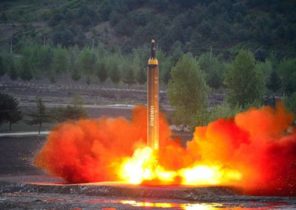While Neanderthals contributed to the extermination of his own kind, members of the species Homo sapiens resorted to cannibalism only in cases of severe hunger. It’s all in the neurosis from which they suffered: than necrophobia. They felt contrived or irrational fear towards dead.
Who was the first serial killer in history? After killing his brother, Cain went on to kill other people? What happens in the brain of a person when he is willing to cross the line and become a murderer, that is, to take the life of another person? Historian, author of numerous bestsellers about the history of crime Peter Vronsky (Peter Vronsky) recently published in Spain a book “Sons of Cain” in which he tries to answer these questions, and tell us about those before caught, the term “serial killer”, called werewolves, vampires, or just monsters.
In the book the author suggests that 40 thousand years ago the mind of a reasonable man needed a brain that would allow us always to treat aggressive outsiders. That is, to other species from the family of hominids, who were their rivals. To during the war to completely exterminate the Neanderthals, who were also mercilessly killed enemies for several generations representatives of the species Homo sapiens turned into serial killers, to destroy those who were weaker. They even ate because that was the law of survival.
The Neanderthals were stronger than Homo sapiens, had a more powerful build, and their brains were larger. In addition, they also skillfully used and produced spears and other cold weapons. Therefore, according to the theory of Vronsky, the main reason why a reasonable man eventually defeated the Neanderthals, has been associated with the development of the ability to refrain from killing their own kind. This mechanism prevented the self-destruction…
While Neanderthals contributed to the extermination of his own kind, members of the species Homo sapiens resorted to cannibalism only in cases of severe hunger. It’s all in the neurosis from which they suffered: than necrophobia. They felt contrived or irrational fear towards dead. This is a small but important advantage played a key role in their survival.
Advantage, which helped to avoid extinction
That’s what he said historian and psychologist Akop Nazaretyan:
“The Georgian philosopher Mamardashvili (1990) wrote that the human race came about when one man mourned the death of the other. Unfortunately, the empirical data of archaeology and Ethnography forces us to reformulate this elegant aphorism. Now it no longer sounds so romantic: protrudi appeared because of the fear of the dead.”
It is believed that this neurosis has appeared in the brain of Homo sapiens during the final stage of the “war” with the Neanderthals. According to archaeological finds, in the middle stone age began to appear “anomalous burial”. We are talking about the graves, the characteristics of which suggest that their main purpose was that the dead did not rise from the dead and not revenge alive. On top of the graves were placed large stones, the bodies were beheaded or nailed to the ground. All this indicates that these hominids were afraid of the dead, and the punishment they could incur for murder.
According to archaeological research, the Neanderthals on this occasion was not worried. The tradition to disturb the dead to escape exists for a long time. For example, in Spain the body is usually nailed to the coffin. But as for the Neanderthals, archaeologists have found virtually no evidence that they really cared about the burial of the dead.
“Necrophobia gave Homo sapiens an advantage over Neanderthals in the war that led to the extinction of the latter. After all, the Neanderthals at the same time struggled not only with us but also among themselves. As a result, when we have won other types of hominids, we did not kill each other, and this prevented our extinction,” — said the historian, researcher and author of documentary films Peter Vronsky.
As the Homo sapiens appeared necrophobia?
Necrophobia, which do not suffer from serial killers, to a considerable extent suppressed the killer instincts in Homo sapiens and allowed him to become what he is now. Thus, the view that was inherent in the characteristics of psychopaths, cannibals, rapists and serial killers that is required to survive under natural selection due than necrophobia was able to create a society in which there was a place the weak, the helpless, old and unable to defend themselves or to feed.
According to archaeological research, “anomalous burial” began to appear in the same period, when the remains of people who died from old age or disease. This means that people not only suffered from necrophobia, but also experienced feelings such as compassion and empathy, they develop close family ties. People are living longer, so had to move to a higher level of organization. The most agile and strongest members of the species Homo sapiens came on the hunt, and the weak stayed home and painted their fantasies and desires on the walls of caves we have mind and leisure. The most ancient cave paintings came about in a time when Neanderthals had already been destroyed. Then originated and the memory of the dead or cultural heritage.
As for the reasons why a reasonable person there was this neurosis that changed history book “Sons of Cain” Vronsky suggests that we can talk about the evolutionary adjustment. That is, the kind that didn’t have big jaws, claws, thick skin or other characteristics of predators, began to develop the ability to kill, learning to create weapons. If he didn’t, it would lead to its extinction.
According to the zoologist Konrad Lorenz (Konrad Lorenz) in his famous book “Aggression” than the more abilities developed to kill, the more pronounced instinctive reluctance to attack their own kind. Such killing machines like sharks, eagles and tigers very rarely attack their relatives, because it would lead to their rapid extinction. At the same time, rats, pigeons and other animals that are not such skilled killers, can be very aggressive towards the same species. As well as rats or pigeons, hominids did not possess the skills necessary to kill, but that all changed when they learned to make weapons. The war began, in which these species have killed each other with weapons. In the end, all died out, except for those whom nature has given an important advantage: they didn’t kill their own kind.
This theory matches perfectly with the hypothesis of techno-humanitarian balance, according to which the deadly weapons created by people who become more sophisticated ways to prevent its use. International agreements and moral principles limit the spread of weapons of mass destruction, and necrophobia limited the ability to kill, which would have doomed the man to self-destruct.







